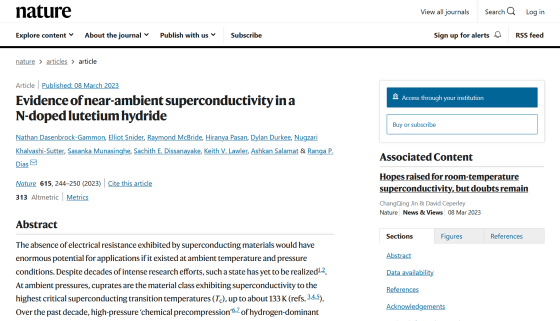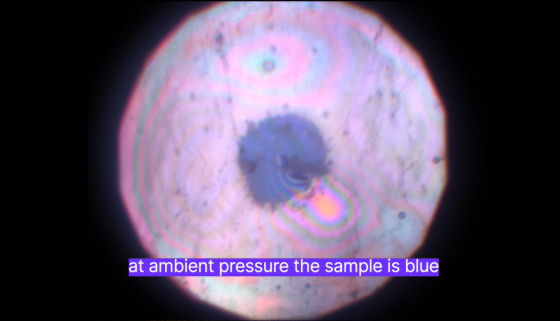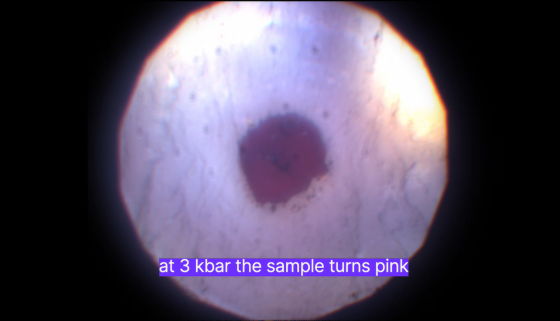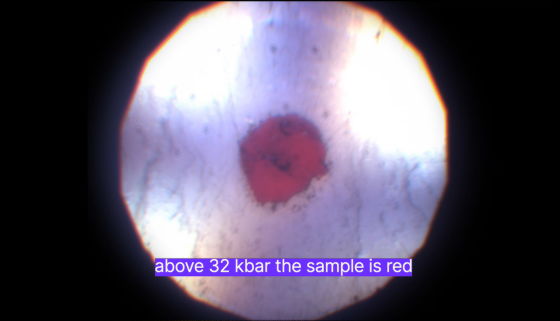An epoch-making paper that realized `` room temperature superconductivity '' will be announced, but there are voices of suspicion from the research team's past suspicions of fraud

Superconductivity is a phenomenon in which electrical resistance becomes zero when a specific metal or compound is extremely cooled. It is a dream technology that is expected to be applied to various new technologies. A groundbreaking paper on such room temperature superconductivity was published in the scientific journal Nature, but the research team of Ranga Diaz and others at the University of Rochester, who wrote the paper, has been accused of research fraud in the past. There are also cautious voices from researchers about the study of.
Evidence of near-ambient superconductivity in a N-doped lutetium hydride | Nature
https://www.nature.com/articles/s41586-023-05742-0

Room-Temperature Superconductor Discovery Meets With Resistance | Quanta Magazine
https://www.quantamagazine.org/room-temperature-superconductor-discovery-meets-with-resistance-20230308/
New Room-Temperature Superconductor Discovered by Scientists - The New York Times
https://www.nytimes.com/2023/03/08/science/room-temperature-superconductor-ranga-dias.html
Room-temperature superconductor works at lower pressures | Ars Technica
https://arstechnica.com/science/2023/03/room-temperature-superconductor-works-at-lower-pressures/
A controversial superconductor may be a game changer — if the claim is true
https://www.sciencenews.org/article/superconductor-room-temperature-scrutiny
Normally, a part of the current flowing through an object is lost as heat energy due to electrical resistance, but when the material becomes superconducting, the electrical resistance becomes zero. Superconducting materials are expected to be applied to various technologies, but since expensive liquid helium is required to cool the material, practical examples at the time of writing the article are magnetic measurement devices (SQUID) and medical It is limited to some fields such as magnetic resonance imaging (MRI) equipment for medical devices.
If superconductivity can be realized not only in an ultra-low temperature environment but also in a room temperature environment, it can be applied to floating cars and linear motor cars, energy-saving and ultra-high-speed computers, safe implantable devices, quantum computers, etc. Researchers have been working for many years. I have been studying the possibility of room temperature superconductivity for a long time. In 2020, Diaz et al.'s research team reported that room temperature superconductivity was achieved by applying high pressure to `` Carbonaceous sulfur hydride '', which is a synthesis of hydrogen, carbon, and sulfur.
Succeeded in generating ``superconductivity'' at room temperature, which was regarded as a phenomenon at low temperatures for over 100 years-GIGAZINE

By Argonne National Laboratory
However, in the 2020 paper, doubts were raised about the measurement of the magnetic susceptibility index used to prove that the compound became a superconductor, and the reproducibility was also questioned. Nature, which published the paper, eventually retracted it over the objections of all nine authors.
How did the paper of the dream 'room temperature superconductivity' become blank - GIGAZINE

In March 2023, a paper on new room-temperature superconductivity written by Diaz and his team was published again in Nature. On March 8, Mr. Diaz gave a lecture at the American Physical Society held in Las Vegas, USA, and gathered an audience that security guards restricted admission.
In a newly published paper by Diaz et al., it is reported that room-temperature superconductivity was achieved using `` nitrogen-doped lutetium hydride '' consisting of hydrogen, nitrogen, and lutetium . In order to create a hydrogen compound, the research team sent a mixed gas consisting of 99% hydrogen and 1% nitrogen to a thin film of lutetium, a rare earth element, while applying high pressure with a pressure device called a diamond anvil cell to 200 degrees Celsius. It was baked for several days.
The research team claimed that by adding 1 gigapascal (10,000 bar), which is about 10,000 times the atmospheric pressure, to the hydrogen compound created in this way, it was possible to achieve a superconducting state at a room temperature of 21 degrees Celsius. I'm here. The hydrogen compounds created this time enter a room-temperature superconducting state at much lower pressures than the compounds reported in the 2020 paper. 'This is the beginning of a new type of material that will be useful in practical applications,' Diaz said in a March 8 speech.
In addition, it seems that the hydrogen compound made this time is characterized by the fact that the color changes vividly depending on the pressure applied, and according to the research team, when pressurized to 300 megapascals (3000 bars), it changes from blue to pink, and further 3.2 gigapascals. It is said that it will become bright red when overpressured to (32,000 bar). You can see the video of the color change of the hydrogen compound below.
A new material changes color as it becomes a superconductor | Science News-YouTube
At moderate pressures, the material has a blue appearance.

However, when the pressure rises to 3000 bar, it turns pink.

Above 32,000 bar it became bright red.

The results of this research are an epoch-making breakthrough toward the realization of room-temperature superconductivity, but some researchers who see the retraction of Diaz's previous paper as a problem have expressed doubts about this research. voices are rising. 'I'm cautiously optimistic. The data in the paper look great,' said Timothy Strobel, a materials scientist at the Carnegie Institution. Maybe it deserves an award, or maybe something else is going on.'
James Hamlin , an associate professor of physics at the University of Florida, said, ``If this is correct, it is probably the biggest breakthrough in the history of superconductivity. I have no choice but to doubt that it may have been in the paper.' Hamlin also pointed out that Diaz's 2020 paper contained a copy from Hamlin's doctoral dissertation in 2007 without permission. Mr. Diaz also admitted that he should have included a quote about this, saying, 'This was my mistake.'
Directly opposing Diaz is Jorge Hirsch , a theoretical physicist at the University of California, San Diego. Regarding the 2020 paper, Mr. Hirsch claims that the data in the paper was fabricated, saying that the raw data published by Diaz and others cannot be measured from the laboratory. Mr. Hamlin also published an independent report on the 2020 paper, in which Mr. Hamlin raises doubts about the electrical resistivity data.
Diaz has denied all wrongdoing allegations against him, and the new paper emphasizes transparency over Nature's extremely thorough review process. “We did our best this time. The reviewers had access to all the data, technically everything,” said Diaz. A Nature spokesperson told The New York Times daily that ``retracted papers do not automatically disqualify authors from submitting new papers. will be considered independently based on the quality and timeliness of the science.'
The lutetium-based hydrogen compound presented in this paper can be worked at much lower pressure than the compound presented in the 2020 paper, so there are dozens of laboratories around the world that can reproduce this experiment. It is said that there is. Diaz is also working on ways to omit the use of the diamond anvil cell from the experimental process, which could further speed up the reproduction effort.
However, Mr. Diaz and others have established a startup called Unearthly Materials to commercialize a series of studies, and detailed and accurate recipes for hydrogen compounds cannot be distributed due to intellectual property rights issues. Diaz said, ``The instructions for making the samples are easy to understand and carefully explained. Given the uniqueness of our process and the existence of intellectual property rights, we do not intend to distribute this material.'' .
Related Posts:





